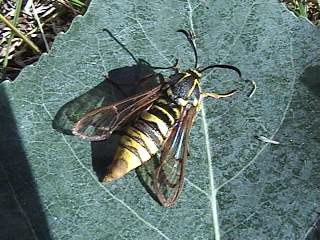 Well, I’ve returned from my camping trip. This was an annual gathering of about half a dozen families. I met an interesting guy named Remy. We had much in common, including our wry sense of humor and an enthusiasm for investigating biodiversity. Upon arrival at the campsite he immediately and correctly identified a snake I had caught.
Well, I’ve returned from my camping trip. This was an annual gathering of about half a dozen families. I met an interesting guy named Remy. We had much in common, including our wry sense of humor and an enthusiasm for investigating biodiversity. Upon arrival at the campsite he immediately and correctly identified a snake I had caught.
My reputation had proceeded me. Remy was looking forward to the two of us hunting snakes together. He managed to catch two. One was a 3-foot long specimen he spotted crossing the road. He grabbed it by the tail just like his hero the late Steve Irwin used to do and wrangled it into a net. I don’t know who was more excited, him or me as I watched him catch it. He missed catching a racer on a night foray because it was just too fast (that’s why they call them racers) but on another night he caught a shiny (it had just shed its skin) gopher snake that he pulled from a hole in the ground.
Not bad for a 6-year-old boy who probably weighs every bit of 50 pounds. The one and only thing he wanted from Santa last year was a snake stick, which he had brought along on this trip.
Remy wasn’t afraid to get dirty or scratched up by thorny desert flora. He took a hornet sting on his calf like a trooper, preferring to limp back to camp rather than let me carry him. I told him my childhood stories about praying mantises — the most bad ass bug in the world. He subsequently dug through the weeds until he found one. He recognized it from my descriptions. He caught grasshoppers, butterflies, beetles, and turtles, which I identified for him. I taught him how to tell the difference between male and female painted turtles (males have longer front claws). I taught him how to remove a butterfly from a bug net without harming it. I quizzed him on how to tell a poisonous red, yellow, and black striped snake from a non-venomous one. He already knew, “Red next to black, venom lack. Red next to yellow, kill a fellow.”
At one point, the kids called me over to see what they thought was a large hornet. At first glance I also thought it was a hornet, but then I noticed its eyes. Hornets, like praying mantises, will actually tilt their heads to look right at you. This hornet didn’t look at me. His head was fixed in position, like a moth’s. I was confident enough to pick him up with my hands, which made some spectators nervous. Luckily I was right. It even buzzed like a hornet when it flapped its transparent wings! This particular moth species had evolved to look and sound just like a hornet as a defense mechanism.
We also found a mole cricket that imitated a hornet but the photo is in someone else’s camera. There are also several great photos of birds in that other camera, which I will share later if and when they arrive as attachments in an email.
I think Remy has the makings of another E. O. Wilson. Although the path we take through life is mostly a matter of luck, you have to start somewhere. Will Remy one day uncover the equivalent of Wilson’s sociobiology?
Click here for a short video montage.
Update: More photos have arrived: sunset, teens making out, turtle, praying mantis, yellow-headed black bird, standup comedian (siting down), young herpetologist, mole cricket, slacker. Photo credits: Jack Stephens, birder extraordinaire.
 Well, I've returned from my camping trip. This was an annual gathering of about half a dozen families. I met an interesting guy named Remy. We had much in common, including our wry sense of humor and an enthusiasm for investigating biodiversity. Upon arrival at the campsite he immediately and correctly identified a snake I had caught.
Well, I've returned from my camping trip. This was an annual gathering of about half a dozen families. I met an interesting guy named Remy. We had much in common, including our wry sense of humor and an enthusiasm for investigating biodiversity. Upon arrival at the campsite he immediately and correctly identified a snake I had caught.

